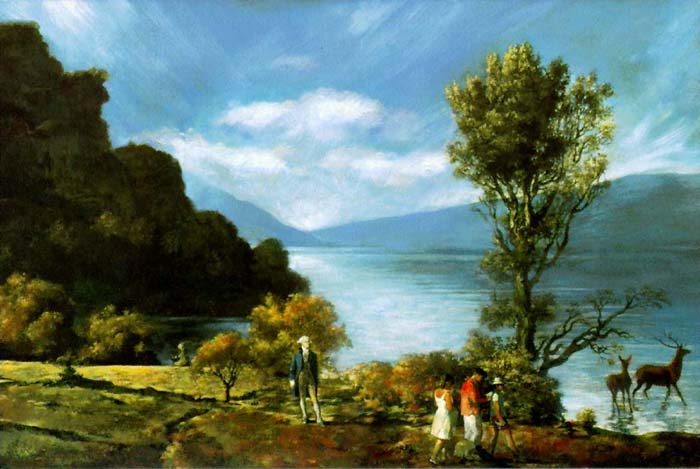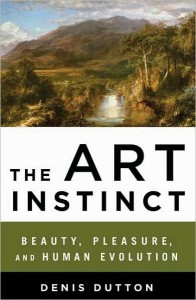
Mr. Scatter apologizes for his recent silence. He’s been a little scattered.
One of the things he’s been doing is reading The Art Instinct: Beauty, Pleasure, and Human Evolution, by Denis Dutton, the philosopher of art who is also founder and editor of the invaluable Web site Arts & Letters Daily.
 The Art Instinct talks a lot about the evolutionary bases of the urge to make art: the biological hard-wiring, if you will. Dutton likes to take his readers back to the Pleistocene era, when the combination of natural selection and the more “designed” selection of socialization, or “human self-domestication,” was creating the ways we still think and feel. To oversimplify grossly, he takes us to that place where short-term survival (the ability to hunt; a prudent fear of snakes) meets long-term survival (the choosing of sexual mates on the basis of desirable personal traits including “intelligence, industriousness, courage, imagination, eloquence”). Somewhere in there, peacock plumage enters into the equation.
The Art Instinct talks a lot about the evolutionary bases of the urge to make art: the biological hard-wiring, if you will. Dutton likes to take his readers back to the Pleistocene era, when the combination of natural selection and the more “designed” selection of socialization, or “human self-domestication,” was creating the ways we still think and feel. To oversimplify grossly, he takes us to that place where short-term survival (the ability to hunt; a prudent fear of snakes) meets long-term survival (the choosing of sexual mates on the basis of desirable personal traits including “intelligence, industriousness, courage, imagination, eloquence”). Somewhere in there, peacock plumage enters into the equation.
There’s a lot to like and a little to argue about in this book, which comes down squarely on the biologically determined as opposed to the culturally determined side of the art-theory fence. Mr. Scatter is an agnostic on this subject, although he leans slightly toward the Darwinian explanation, if for no better reason than that he finds Barthes, Derrida, Foucault and their academic acolytes a bit fatiguing, and he sees no reason why we should consider the analysts of art more important than the artists themselves. Mr. Scatter says this despite his own penchant for analyzing stuff. Besides, The Art Instinct uses a lot of anthropological evidence in support of its argument, and long ago Mr. Scatter was actually awarded (he hesitates to say “earned”) a university degree in sociology and anthropology, although he usually just says “anthro” because that’s the part that seems to have stuck with him in his later adventures in life.